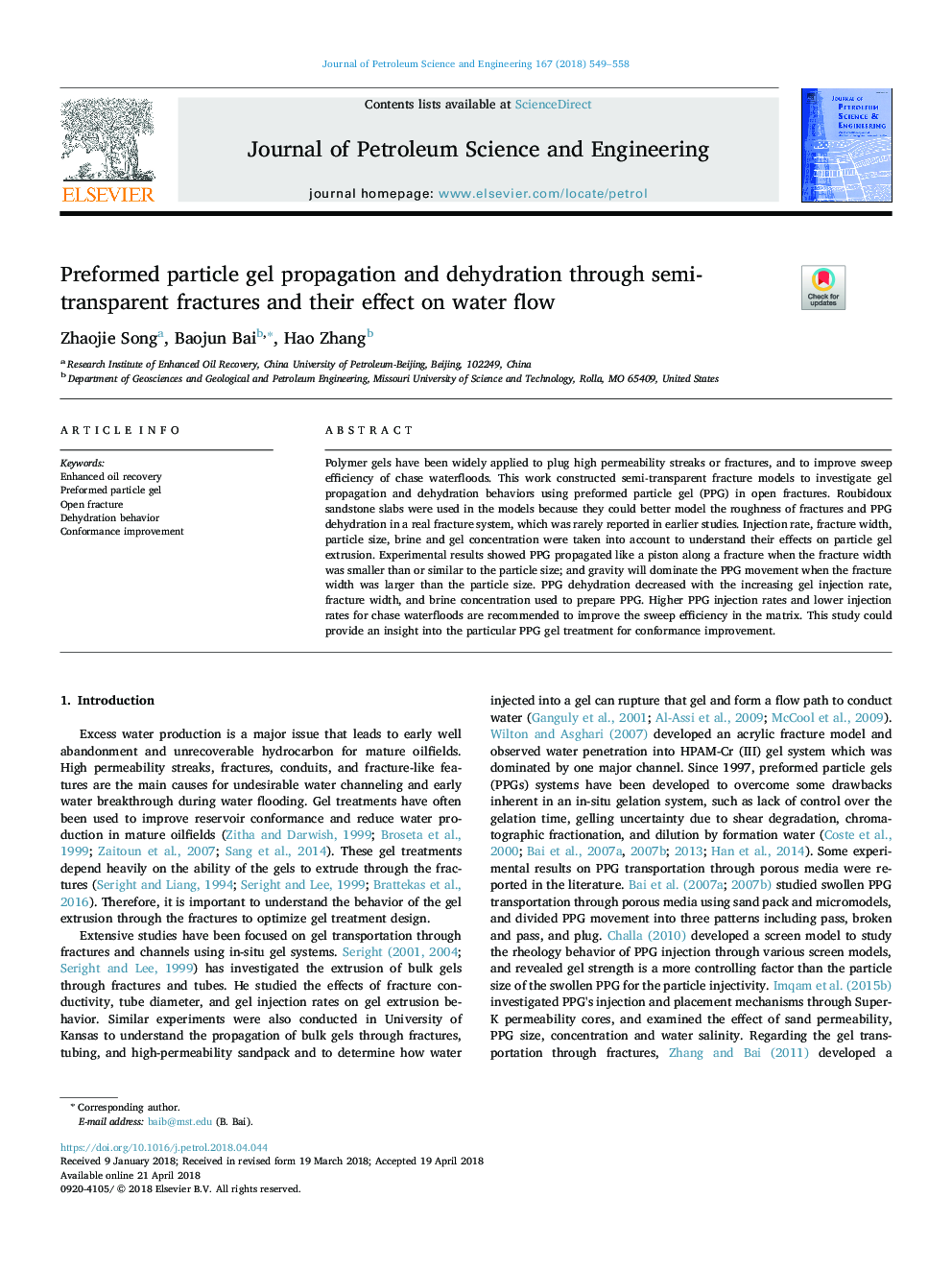| Article ID | Journal | Published Year | Pages | File Type |
|---|---|---|---|---|
| 8124831 | Journal of Petroleum Science and Engineering | 2018 | 10 Pages |
Abstract
Polymer gels have been widely applied to plug high permeability streaks or fractures, and to improve sweep efficiency of chase waterfloods. This work constructed semi-transparent fracture models to investigate gel propagation and dehydration behaviors using preformed particle gel (PPG) in open fractures. Roubidoux sandstone slabs were used in the models because they could better model the roughness of fractures and PPG dehydration in a real fracture system, which was rarely reported in earlier studies. Injection rate, fracture width, particle size, brine and gel concentration were taken into account to understand their effects on particle gel extrusion. Experimental results showed PPG propagated like a piston along a fracture when the fracture width was smaller than or similar to the particle size; and gravity will dominate the PPG movement when the fracture width was larger than the particle size. PPG dehydration decreased with the increasing gel injection rate, fracture width, and brine concentration used to prepare PPG. Higher PPG injection rates and lower injection rates for chase waterfloods are recommended to improve the sweep efficiency in the matrix. This study could provide an insight into the particular PPG gel treatment for conformance improvement.
Related Topics
Physical Sciences and Engineering
Earth and Planetary Sciences
Economic Geology
Authors
Zhaojie Song, Baojun Bai, Hao Zhang,
